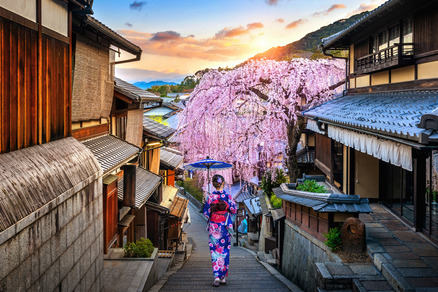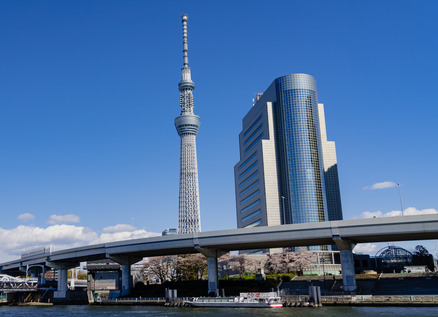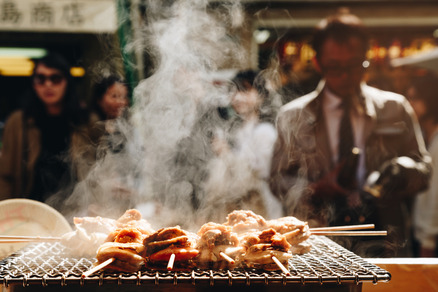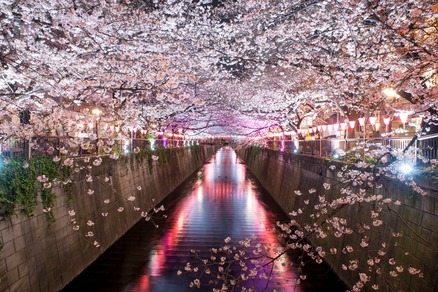Tokyo Travel Guide: Top Attractions, Food, and Tips for First-Time Visitors
| November 9, 2024 | Posted by Bedroom Checker under Tokyo Travel Guide |
Tokyo Travel Guide
 Tokyo stands as a global hub for culture, innovation, and entertainment. Its sprawling neighborhoods offer travelers an array of experiences, each one unique, whether it’s savoring authentic Japanese cuisine, marveling at centuries-old temples, exploring quirky themed cafes, or shopping in bustling districts. Tokyo has something for everyone, from first-time visitors drawn to its allure to seasoned travelers looking to uncover new facets of this captivating metropolis. A comprehensive Tokyo travel guide can help you navigate this dynamic city and make the most of every moment.
Tokyo stands as a global hub for culture, innovation, and entertainment. Its sprawling neighborhoods offer travelers an array of experiences, each one unique, whether it’s savoring authentic Japanese cuisine, marveling at centuries-old temples, exploring quirky themed cafes, or shopping in bustling districts. Tokyo has something for everyone, from first-time visitors drawn to its allure to seasoned travelers looking to uncover new facets of this captivating metropolis. A comprehensive Tokyo travel guide can help you navigate this dynamic city and make the most of every moment.
Whether you’re planning to visit the iconic landmarks like Tokyo Tower or Shibuya Crossing, explore hidden gems in Asakusa, or immerse yourself in the heart of Japanese pop culture in Akihabara, this Tokyo travel guide covers all the essentials for a perfect Tokyo experience. We’ll dive into everything you need to know from transportation tips and must-see sights to food, shopping, and accommodation recommendations. As a sprawling city of distinct districts, Tokyo can feel overwhelming at first, but with this Tokyo travel guide, you’ll have all the guidance needed to enjoy Tokyo’s unique mix of tradition and innovation to the fullest.
Getting to Tokyo
Getting to Tokyo is convenient, as the city is served by two major airports: Narita International Airport and Haneda Airport. Haneda is closer to central Tokyo, making it ideal for a faster commute. Various transportation options are available from both airports, including the Narita Express, Skyliner, and buses that connect travelers to Tokyo’s major hubs, like Shinjuku, Shibuya, and Tokyo Station. Japan Railways (JR) also operates extensive lines across the city, making travel within Tokyo a breeze.
Top Attractions in Tokyo
 Tokyo is a vibrant metropolis that seamlessly blends tradition with modernity, offering a plethora of attractions that cater to diverse interests. From historic temples and serene gardens to cutting-edge architecture and bustling shopping districts, there is something for everyone in this dynamic city. Start your journey at the iconic Tokyo Tower, where you can enjoy panoramic views of the sprawling urban landscape. Just a short distance away lies the majestic Senso-ji Temple in Asakusa, Tokyo’s oldest temple, surrounded by charming streets filled with shops and eateries.
Tokyo is a vibrant metropolis that seamlessly blends tradition with modernity, offering a plethora of attractions that cater to diverse interests. From historic temples and serene gardens to cutting-edge architecture and bustling shopping districts, there is something for everyone in this dynamic city. Start your journey at the iconic Tokyo Tower, where you can enjoy panoramic views of the sprawling urban landscape. Just a short distance away lies the majestic Senso-ji Temple in Asakusa, Tokyo’s oldest temple, surrounded by charming streets filled with shops and eateries.
For those seeking a glimpse into Japan’s royal heritage, the Imperial Palace offers beautifully maintained gardens and a chance to learn about the country’s history. Shibuya’s famous Shibuya Crossing is a must-see for its electrifying atmosphere, while the fashionable streets of Harajuku are perfect for exploring unique boutiques and trendy cafes. Art enthusiasts should not miss the Mori Art Museum in Roppongi, showcasing contemporary art with a stunning view from its observation deck. Finally, immerse yourself in the vibrant pop culture of Akihabara, where anime and gaming enthusiasts can find a treasure trove of merchandise and themed cafes. Each of these attractions captures a different facet of Tokyo’s multifaceted identity, ensuring an unforgettable experience for every visitor.
- Tokyo Tower: An iconic symbol of the city, offering stunning panoramic views from its observation decks.
- Senso-ji Temple: Tokyo’s oldest temple located in Asakusa, surrounded by lively streets filled with shops and traditional snacks.
- Imperial Palace: The residence of the Emperor of Japan, featuring beautiful gardens and historic sites that reflect Japan’s royal heritage.
- Shibuya Crossing: One of the busiest pedestrian crossings in the world, showcasing the energy and pace of urban Tokyo.
- Harajuku: A trendy district known for its unique fashion boutiques, quirky cafes, and vibrant street culture.
- Mori Art Museum: A contemporary art museum located in Roppongi, offering impressive exhibitions and a breathtaking view of the city.
- Akihabara: A haven for anime and gaming enthusiasts, packed with shops, themed cafes, and electronic stores that celebrate Japanese pop culture.
These attractions collectively highlight the rich tapestry of experiences that Tokyo has to offer, making it a city unlike any other.
Dining in Tokyo
 Tokyo’s dining scene is not just world-renowned; it is an intricate tapestry of flavors, cultures, and culinary techniques that makes it a must-visit destination for food lovers. The city is alive with a stunning array of culinary options, from bustling street vendors serving up mouthwatering yakitori and delectable takoyaki to opulent Michelin-starred restaurants that elevate traditional Japanese cuisine to an art form. Each neighborhood reveals its own unique gastronomic gems, allowing visitors to indulge in everything from fresh sushi at an intimate omakase bar to comforting bowls of ramen in a cozy eatery. With such a rich and diverse array of dining experiences that cater to every palate and budget, Tokyo offers an adventure for the senses, ensuring that every meal becomes a memorable exploration of Japan’s vibrant food culture. Here are some essential recommendations to help you navigate this culinary wonderland during your Tokyo adventure:
Tokyo’s dining scene is not just world-renowned; it is an intricate tapestry of flavors, cultures, and culinary techniques that makes it a must-visit destination for food lovers. The city is alive with a stunning array of culinary options, from bustling street vendors serving up mouthwatering yakitori and delectable takoyaki to opulent Michelin-starred restaurants that elevate traditional Japanese cuisine to an art form. Each neighborhood reveals its own unique gastronomic gems, allowing visitors to indulge in everything from fresh sushi at an intimate omakase bar to comforting bowls of ramen in a cozy eatery. With such a rich and diverse array of dining experiences that cater to every palate and budget, Tokyo offers an adventure for the senses, ensuring that every meal becomes a memorable exploration of Japan’s vibrant food culture. Here are some essential recommendations to help you navigate this culinary wonderland during your Tokyo adventure:
- Tsukiji Outer Market: Although the main fish market has relocated to Toyosu, the Tsukiji Outer Market remains a vibrant hub for food enthusiasts. Here, you can indulge in the freshest sushi and seafood, while also exploring a range of street food options that highlight the best of Japanese cuisine.
- Ramen: Tokyo is a paradise for ramen lovers, boasting an incredible diversity of styles. The local specialty, Shoyu ramen, features a soy sauce-based broth that is both rich and flavorful. Key neighborhoods like Shinjuku and Ikebukuro are home to some of the city’s most famous ramen shops, where you can savor authentic bowls prepared by skilled chefs.
- Izakayas: Experience the charm of traditional Japanese izakayas—casual pubs that serve a variety of small plates, ideal for sharing and sampling different dishes. Areas such as Ebisu and Shinjuku are dotted with these lively establishments, where you can enjoy everything from grilled meats to seasonal delicacies in a relaxed atmosphere.
- Street Food in Asakusa and Ueno: For a taste of Tokyo’s vibrant street food scene, head to Asakusa and Ueno. Here, you’ll find a delightful array of popular snacks, including taiyaki (fish-shaped pastries filled with sweet red bean paste), yakitori (grilled skewers of meat and vegetables), and dorayaki (fluffy pancakes also filled with sweet red bean paste). These treats offer a fun and flavorful way to experience the city’s culinary culture on the go.
Whether you’re looking for a quick bite or a multi-course meal, Tokyo’s dining landscape promises to leave you enchanted and satisfied.
Shopping in Tokyo
Tokyo is a vibrant shopping haven that caters to a diverse array of tastes and budgets. One of the best places to start is Ginza, the city’s upscale shopping district, renowned for its luxury boutiques and flagship stores from international brands. Here, you can explore high-end department stores like Mitsukoshi and Takashimaya, where everything from designer fashion to gourmet food items await. For those interested in traditional crafts, the nearby Nihonbashi area offers a delightful mix of artisanal shops and historical charm, showcasing unique Japanese goods that make for perfect souvenirs. On the other end of the spectrum lies the energetic neighborhoods of Harajuku and Shibuya, where youthful culture and trendy styles reign supreme. Harajuku is famous for its colorful street fashion and quirky shops, especially along Takeshita Street, where you can find everything from vintage clothing to the latest accessories. Just a short distance away, Shibuya is home to the iconic Shibuya 109, a bustling shopping center filled with the latest trends in Japanese street fashion. As you wander through these districts, you’ll encounter a mix of established brands and up-and-coming designers, making it easy to discover unique pieces that reflect the dynamic spirit of Tokyo.
Key Shopping Areas in Tokyo
- Ginza: Upscale district with luxury boutiques and flagship stores.
- Nihonbashi: Features traditional crafts and artisanal shops.
- Harajuku: Known for vibrant youth culture and unique fashion boutiques.
- Takeshita Street: A bustling street filled with quirky shops and trendy accessories.
- Shibuya: Home to Shibuya 109, showcasing the latest Japanese street fashion.
Navigating Tokyo’s Public Transportation
Tokyo boasts one of the most efficient and extensive public transportation systems in the world, making it easy for travelers to explore the city. The Tokyo Metro and Toei Subway networks connect nearly every corner of the metropolis, with frequent trains that run on time, ensuring you can move quickly between districts. In addition to the subway, the JR Yamanote Line circles the city and serves as a convenient backbone for accessing popular areas like Shibuya, Shinjuku, and Ueno. The system is well-signposted in both Japanese and English, making it accessible for non-native speakers. Purchasing a Suica or Pasmo card can simplify your travel, allowing you to easily tap in and out of stations without needing to buy individual tickets. With clean trains and comprehensive routes, navigating Tokyo’s public transportation is not only practical but also a great way to experience the city like a local.
Key Points for Using Tokyo’s Public Transportation
- Extensive Networks: Tokyo Metro and Toei Subway cover the city comprehensively.
- JR Yamanote Line: A circular train line connecting major districts.
- Bilingual Signage: Stations are clearly marked in both Japanese and English.
- Suica/Pasmo Cards: Prepaid cards for convenient travel without buying individual tickets.
- Punctuality: Trains are known for their reliability and timeliness.
- Clean and Safe: Public transport is well-maintained and considered very safe.
Where to Stay in Tokyo
Tokyo’s accommodation options are as diverse as the city itself, catering to every type of traveler. In the energetic districts of Shibuya and Shinjuku, visitors can immerse themselves in the city’s vibrant atmosphere while enjoying a range of international hotels and stylish boutique stays. For those seeking a more traditional experience, Asakusa offers charming ryokans (Japanese inns) and budget-friendly hotels situated near iconic attractions like Senso-ji Temple. Meanwhile, the upscale neighborhoods of Ginza and Marunouchi are home to luxurious hotels and business-oriented accommodations, all conveniently located near Tokyo Station, making it easy to explore the rest of the city.
- Shibuya and Shinjuku: Bustling areas with a mix of international hotels and boutique stays.
- Asakusa: Offers traditional ryokans and budget-friendly options near popular sites.
- Ginza and Marunouchi: Upscale neighborhoods with luxury hotels and easy access to transport.
Seasonal Highlights and Festivals
 Tokyo is a city that celebrates the changing seasons, each bringing its own unique charm and festivities. In spring (March to May), the iconic cherry blossom season draws crowds to beautiful parks such as Ueno Park and Shinjuku Gyoen, where the sight of blooming sakura is nothing short of magical. As summer (June to August) arrives, the city bursts into life with vibrant festivals, including the famous Sumida River Fireworks and traditional events like Bon Odori that showcase local culture. Autumn (September to November) brings stunning fall foliage, especially in parks like Rikugien and the forested areas of Meiji Shrine, providing a picturesque backdrop for exploration. In winter (December to February), mild temperatures and dazzling illumination displays in neighborhoods like Omotesando and Roppongi create a festive atmosphere perfect for evening strolls.
Tokyo is a city that celebrates the changing seasons, each bringing its own unique charm and festivities. In spring (March to May), the iconic cherry blossom season draws crowds to beautiful parks such as Ueno Park and Shinjuku Gyoen, where the sight of blooming sakura is nothing short of magical. As summer (June to August) arrives, the city bursts into life with vibrant festivals, including the famous Sumida River Fireworks and traditional events like Bon Odori that showcase local culture. Autumn (September to November) brings stunning fall foliage, especially in parks like Rikugien and the forested areas of Meiji Shrine, providing a picturesque backdrop for exploration. In winter (December to February), mild temperatures and dazzling illumination displays in neighborhoods like Omotesando and Roppongi create a festive atmosphere perfect for evening strolls.
- Spring: Cherry blossom season with stunning views in Ueno Park and Shinjuku Gyoen.
- Summer: Festivals like the Sumida River Fireworks and Bon Odori celebrations.
- Autumn: Beautiful fall foliage in parks such as Rikugien and Meiji Shrine.
- Winter: Mild weather and enchanting illumination displays throughout the city.
Etiquette and Cultural Tips for Tokyo Travelers
Navigating the cultural landscape of Tokyo requires an understanding of local etiquette, which can significantly enhance your experience. One essential practice is to maintain a respectful silence on public transportation; locals appreciate low voices and minimal phone use. Additionally, when visiting homes, ryokans, or traditional restaurants, be prepared to remove your shoes at the entrance, often replacing them with provided slippers. Although Tokyo is modern and many establishments accept credit cards, cash is still widely used, so carrying yen for small purchases is advisable. Punctuality is highly regarded, so always aim to arrive on time for appointments or train departures. Lastly, remember that tipping is not customary in Japan; excellent service is expected without the need for gratuity.
- Silence on Transport: Keep conversations quiet and avoid phone calls on public transport.
- Shoes Off Indoors: Remove shoes in homes, ryokans, and traditional restaurants.
- Cash vs. Credit: Cash is widely used; carry yen for small purchases.
- Punctuality: Being on time is highly valued; plan to arrive promptly.
- No Tipping: High-quality service is expected without additional gratuity.
Tokyo’s Nearby Day Trips
While Tokyo offers countless attractions, a variety of remarkable day trips await just outside the city, each providing a unique experience. Mount Fuji and the Fuji Five Lakes present stunning views and outdoor adventures, with Kawaguchiko Lake being a popular spot for breathtaking photographs and recreational activities. Nikko, known for its historical significance, Toshogu Shrine and beautiful nature, particularly stunning during autumn when the leaves change color. For a more laid-back escape, Kamakura offers a charming coastal atmosphere, featuring the famous Great Buddha statue, serene temples, and inviting beaches that make for a perfect day of relaxation and exploration.
- Mount Fuji: Iconic views, hiking, and hot springs near Kawaguchiko Lake.
- Nikko: Historic shrines and beautiful nature, especially vibrant in autumn.
- Kamakura: Coastal town known for the Great Buddha and relaxing beaches.
Summary of Essential Tips for Tokyo Travelers
To maximize your enjoyment of Tokyo, planning and preparation are key. The city is bustling and filled with attractions, so it helps to outline your must-see sights and book accommodations in advance to avoid last-minute stress. Tokyo’s weather can vary significantly between seasons, so check forecasts and pack appropriately, especially if you’re traveling during the rainy season. Additionally, while many locals understand some English, learning a few basic Japanese phrases—like “Arigatou” (Thank you) and “Sumimasen” (Excuse me)—can enhance your interactions and show respect for the culture. These small efforts can lead to a richer and more enjoyable travel experience.
- Plan Ahead: Outline must-see sights and book accommodations in advance.
- Pack for Weather: Check forecasts and pack accordingly, especially for rain.
- Learn Basic Phrases: Knowing simple Japanese phrases can enhance interactions.
Final Thoughts
Tokyo’s unparalleled blend of tradition and innovation makes it one of the most fascinating cities in the world. From the vibrant streets of Shibuya to the tranquil gardens of the Imperial Palace, this Tokyo travel guide provides all you need to know to make the most of your trip. Whether you’re a history buff, a foodie, or an anime fan, Tokyo has something special for you. Plan well, explore thoroughly, and Tokyo will offer you an unforgettable journey through one of the world’s most dynamic cities.

